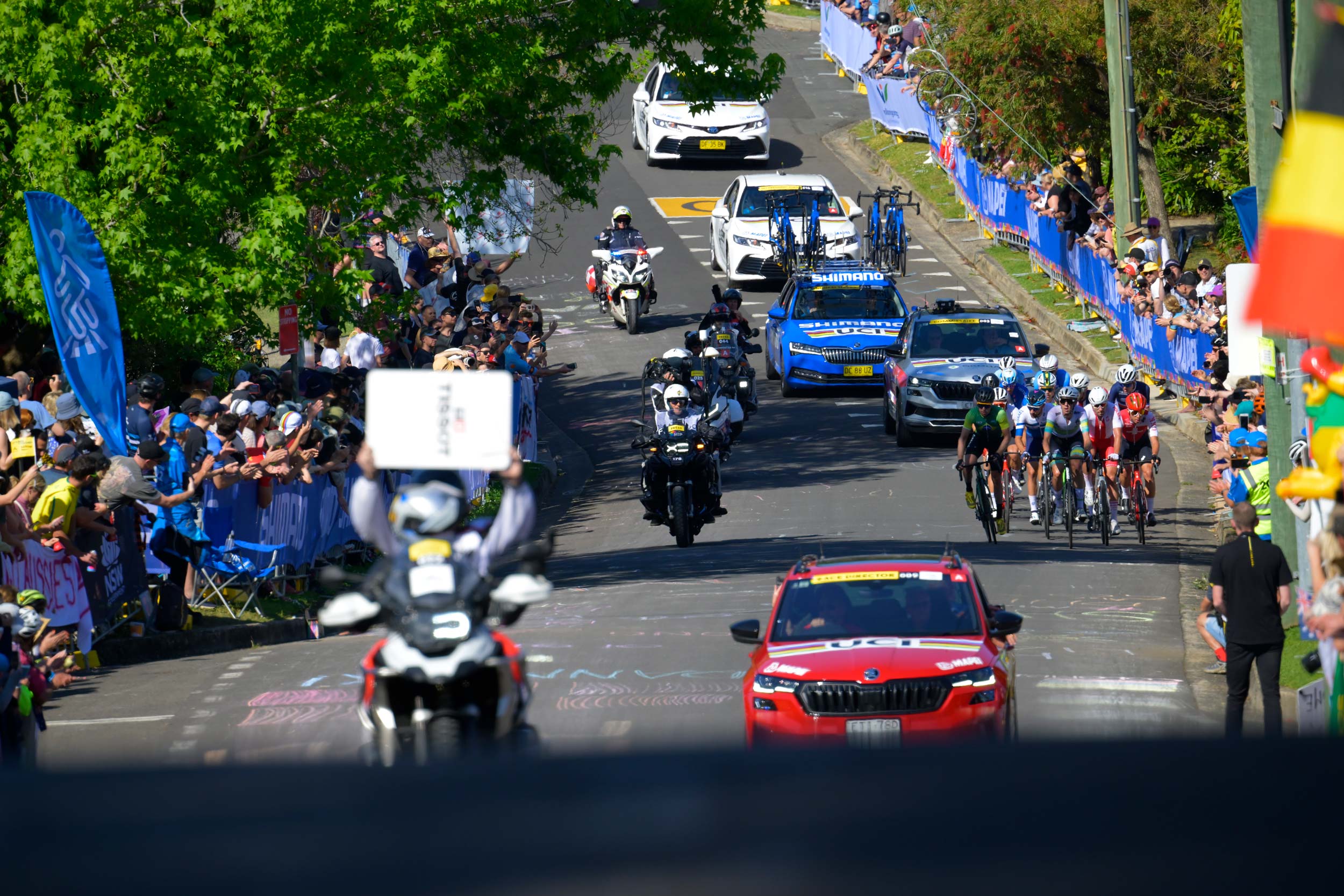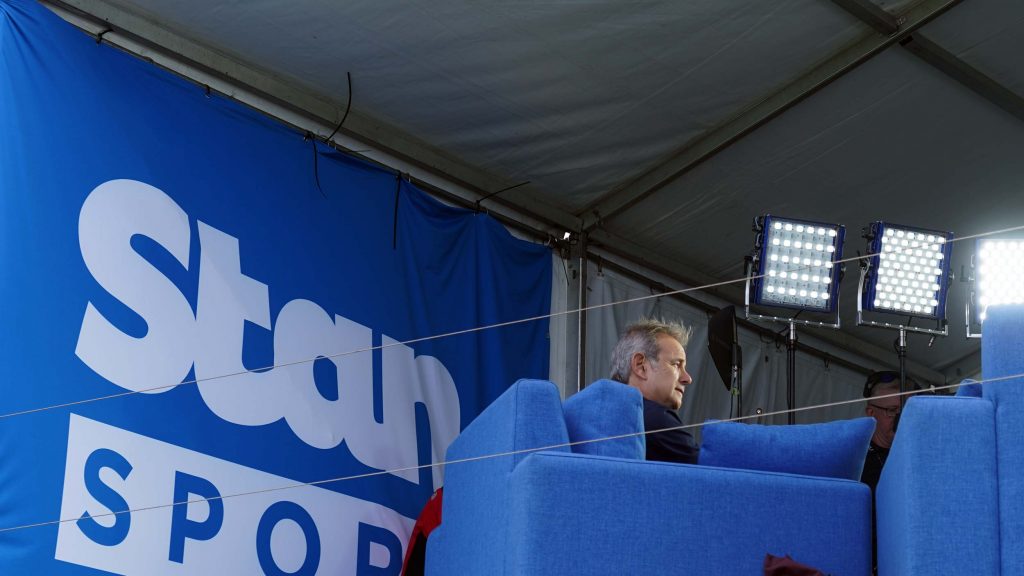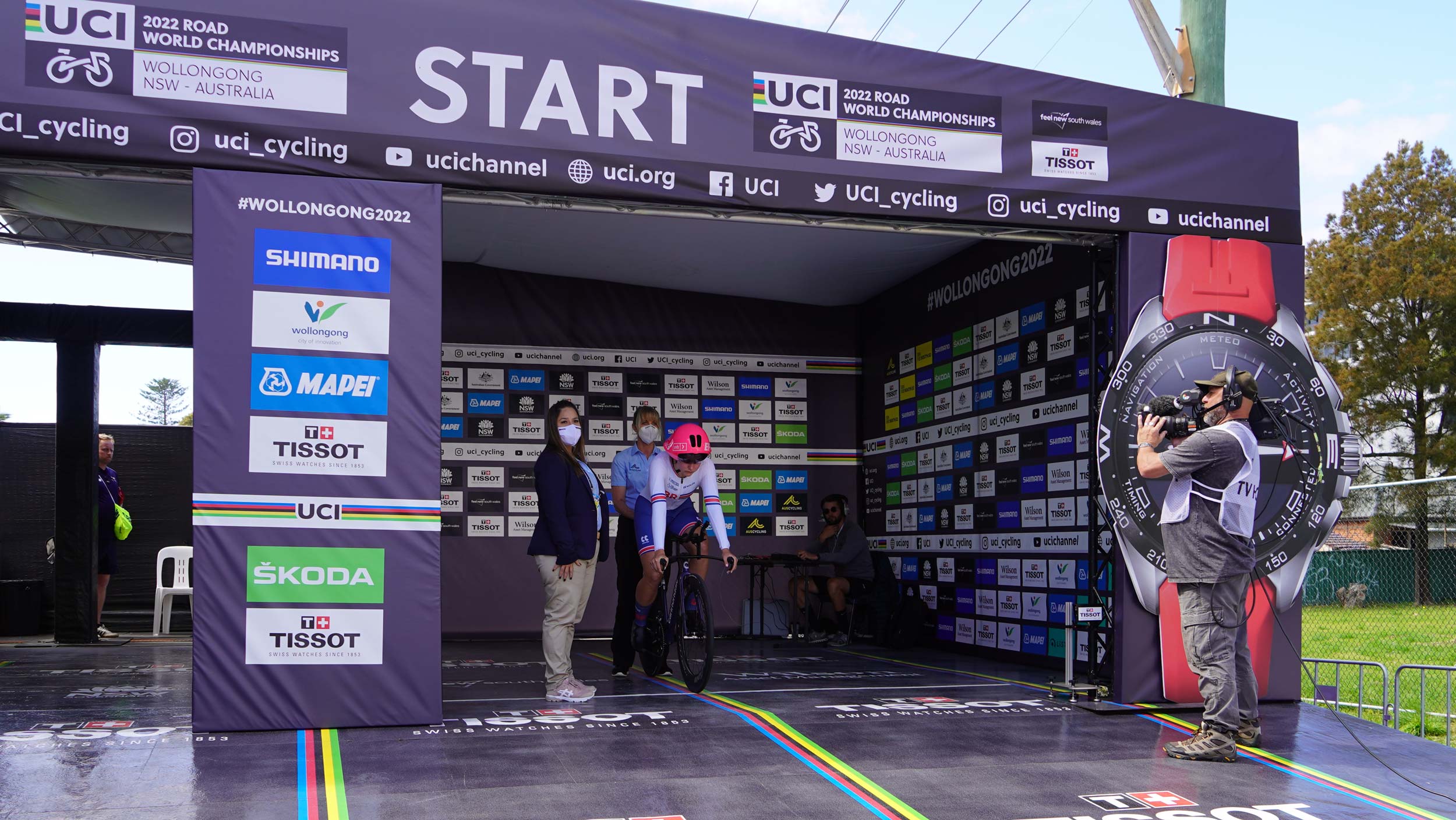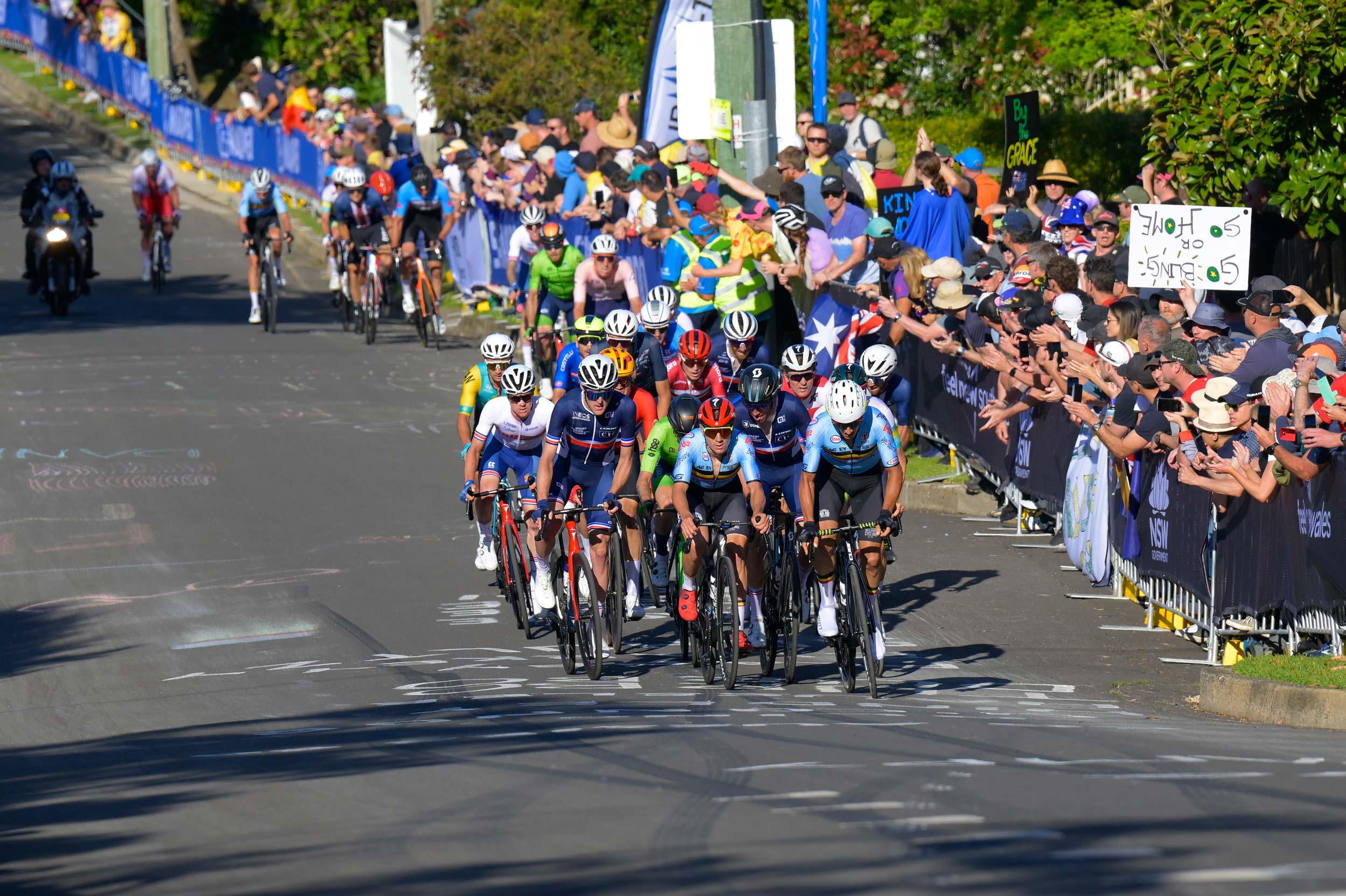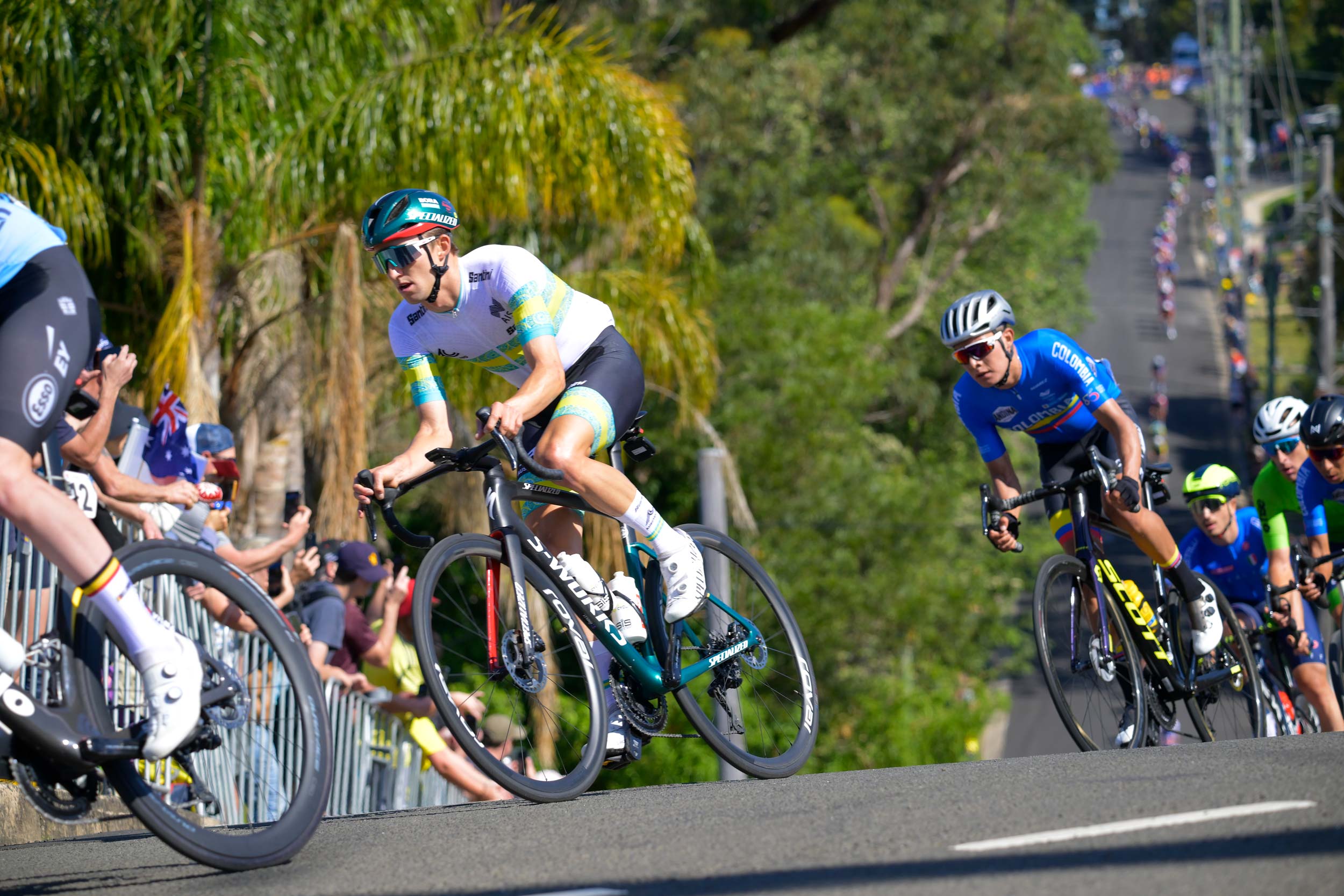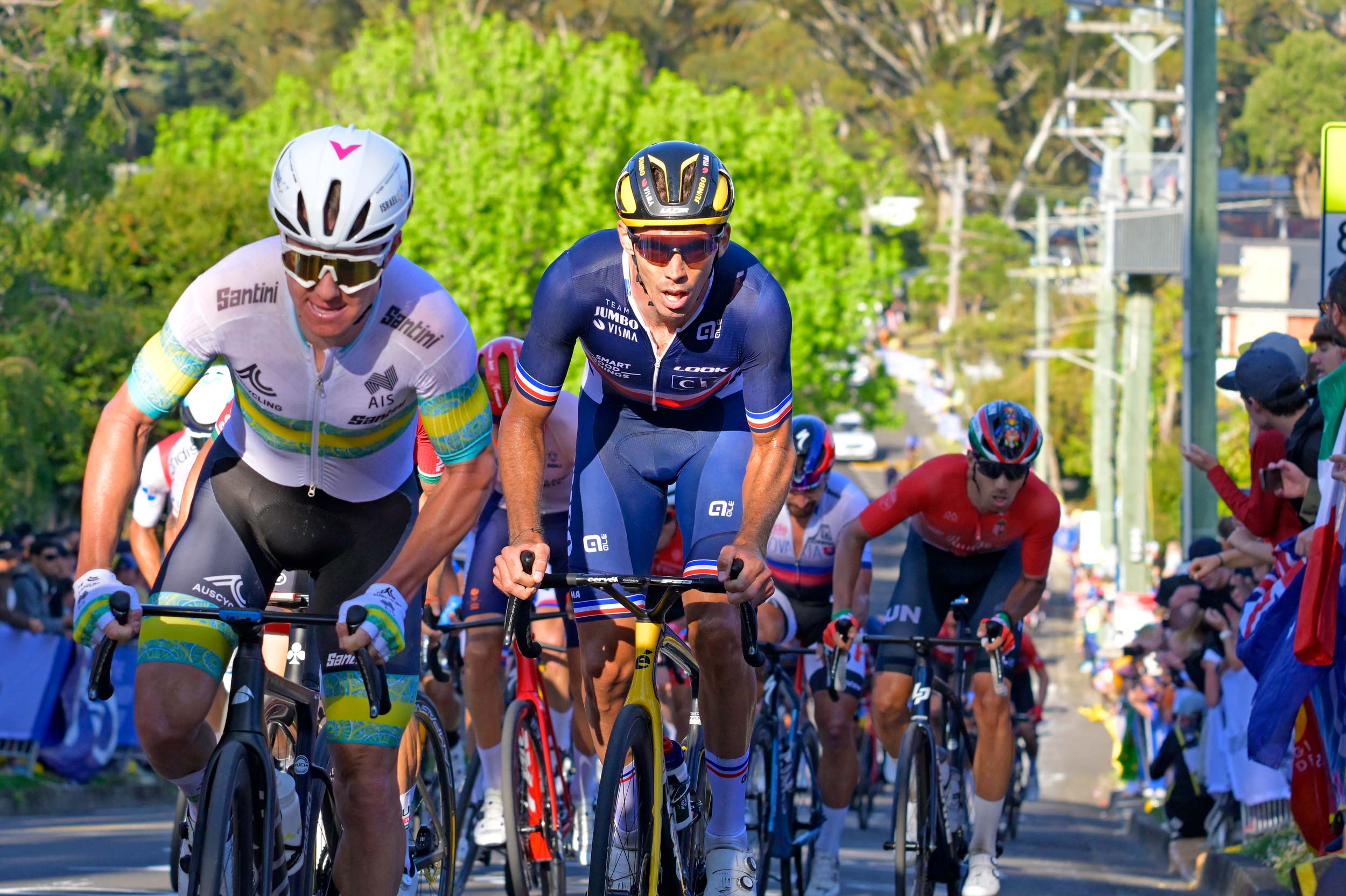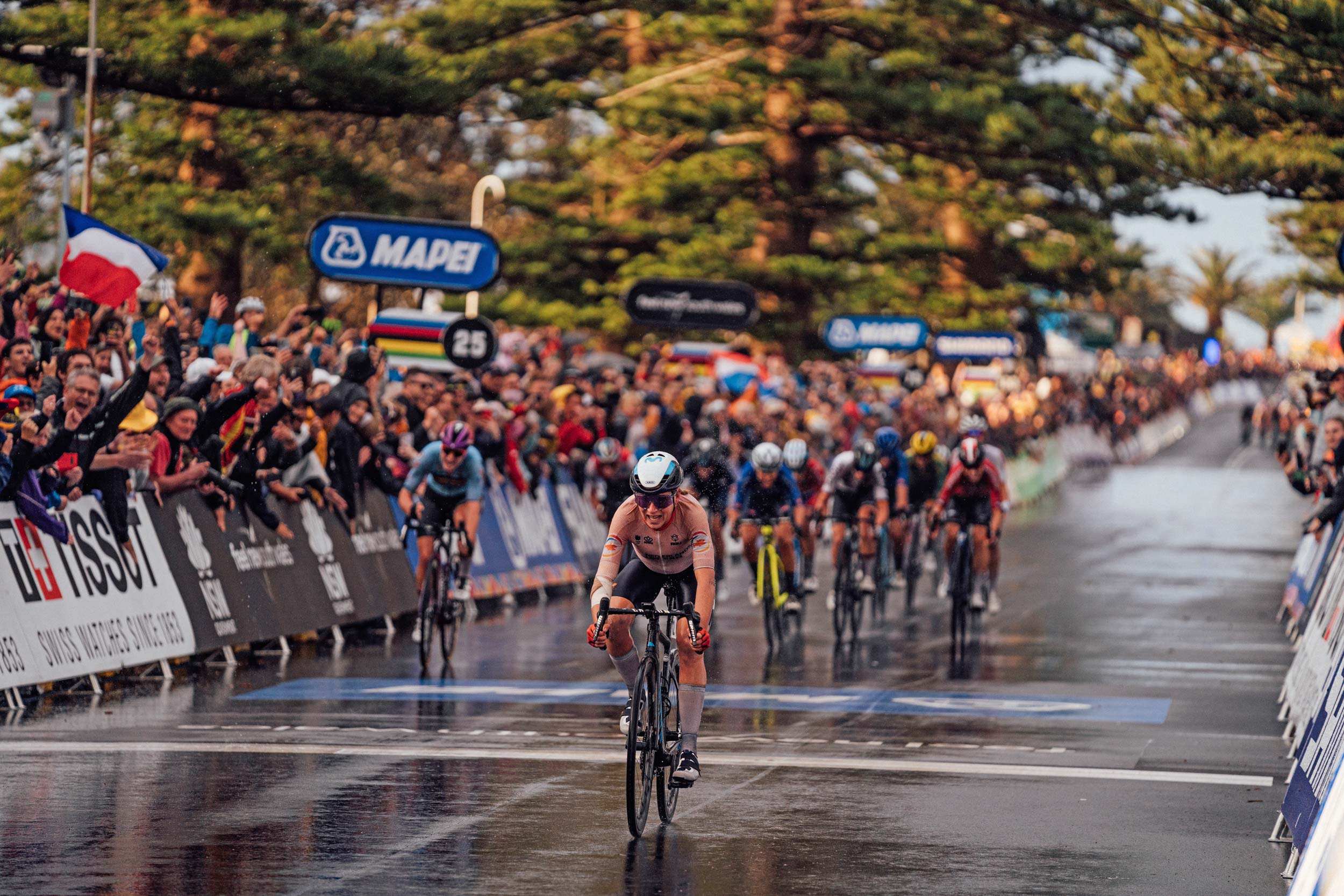Cycling could have been the winner when the world championships came to town earlier this year. Alas, the legacy of #Wollongong2022 is scant and the considerable government investment in the event failed to capitalise on a fantastic opportunity for a far-reaching promotion.
– Blog and video commentary by Rob Arnold
A bike race is a great way to showcase a region. When the peloton is pictured rolling across an incredible stretch of road like the Sea Cliff Bridge it provides fantastic imagery and the tourism sell begins.
‘Look at this place,’ the pictures scream. ‘Come and have a closer look at Wollongong and surrounds. There is a lot on offer: great cycling terrain, wonderful beaches, and plenty to explore.’
But the world championships of cycling should be about more than showcasing the region as a nice place to visit while riding your bike, or even for a holiday stay. The legacy of an event like this, at a time like this, could have been much bigger and longer lasting – if only the organisers, and the government that bankrolled the championships, understood the message they were trying to relay.
Instead of highlighting the many benefits bike riding can offer, the focus of most coverage of #Wollongong2022 was on tourism… and, alas, the negative impact that came with the significant road closures and interruption to routine imposed on locals by the whims of the UCI.
There are many priorities to consider when organising an event of this nature (and stature). The safety of participants and spectators alike is paramount. But there should also be an emphasis to ensure that the benefits of cycling are highlighted, reinforced and leveraged as inspiration for anyone considering taking up bike riding and/or racing.
The race route had to include varied elements in order to achieve the best outcome: great imagery, safe conditions, and ideally a platform for captivating competition.
What we saw in Wollongong was a bold attempt… but, because of myriad reasons, the worlds of 2022 failed on numerous fronts.
As we ride towards the end of a year I’ve started to consider the legacy of a considerable investment by state and federal governments. Unfortunately, the net effect of #Wollongong2022 is minimal.
Although there was some great racing that the organising committee can be proud of, the overall outcome of a huge spend was not even close to what it could have been.
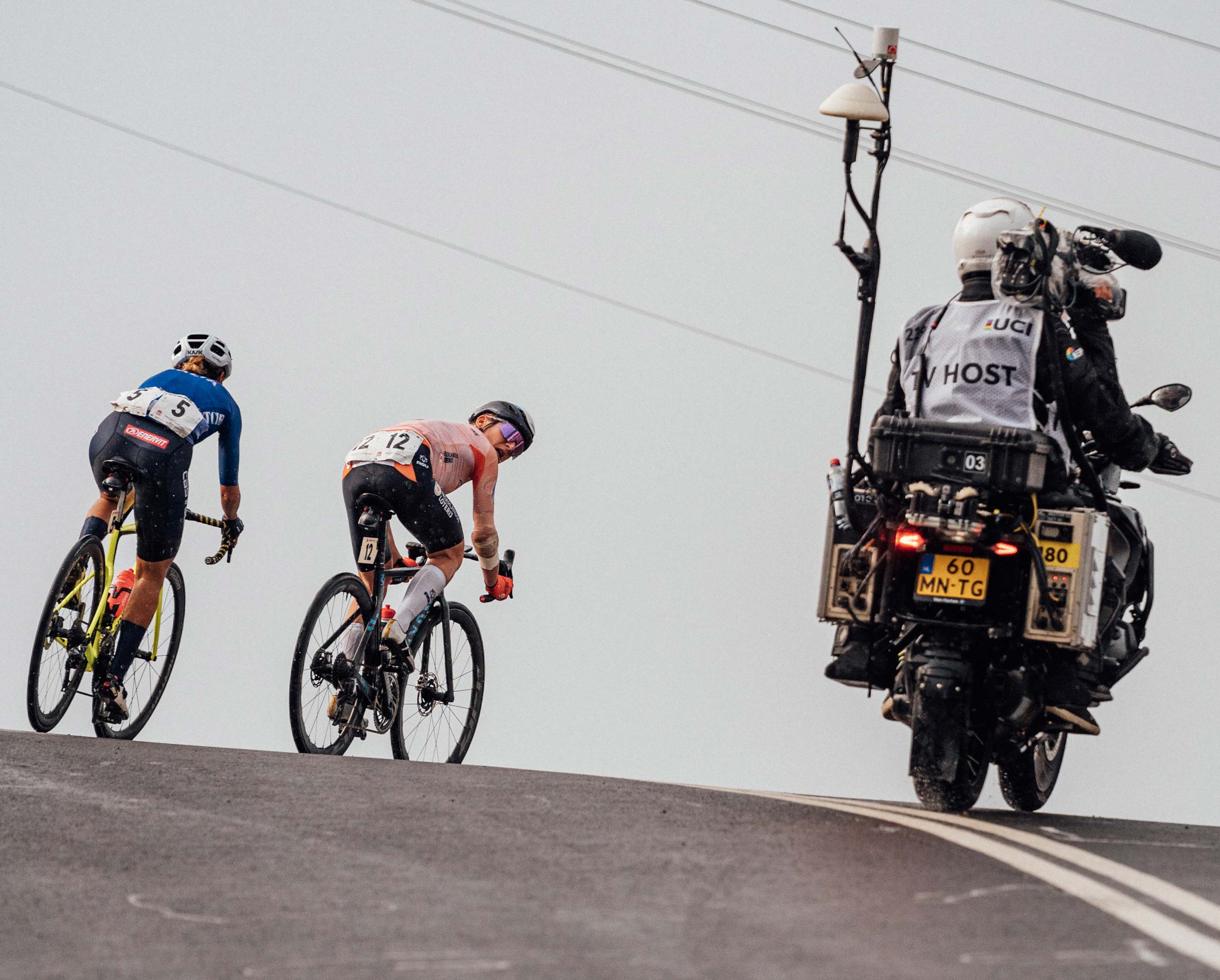
Annemiek van Vleuten on the Saturday of the championships… when she would become world champion once again. The Dutchwoman’s victory is one of the key talking points of the 2022 worlds… If you review the coverage of the championships, however, the hotel incident involving her compatriot Mathieu van der Poel got far more attention. What a great shame!
Beyond pretty pictures…
What was obvious if you happened upon any of the pre-event ‘hype’ is that the world championships in Wollongong and surrounds were seen as a great chance to encourage people to visit the region. Elements of the race route were certainly designed to ensure that captivating images of wonderful locations would be seen on TV screens around the world.
When the road races on the final weekend traced down the coastline from Helensburgh, over the Sea Cliff Bridge and onwards to the lap up Mount Keira and back to town, it was indeed a showcase of the beauty of parts of the Illawarra. But then, for the bulk of the actual racing action, there were circuits held on suburban streets that temporarily turned into hubs of activity with large crowds and plenty of festivities.
There’s nothing race organisers can do to manage the weather but even the rain that impacted the elite (and under-23) women’s road race on the Saturday of the championships contributed to stunning images.
Look, a rainbow over Wollongong… while they’re racing for a rainbow jersey! We got that chopper shot once, twice, three times – and more.
Did you see it? Maybe not. Stan might have taken you to an ad-break instead.
Pay TV assigned broadcast rights
For those who were there, the final weekend was one to remember: sensational racing, fitting champions, and sporting action that provided plenty of spark with lots to consider. But if you were watching on TV in Australia, you would have seen a lot of commercials amidst the sporadic showing of the racing.
The broadcast rights debacle which meant TV viewers in the host nation had to pay if they wanted to watch most of the coverage was one major failure of the championships. But the very notion that the images of world-class cycling action in Wollongong were to showcase the region and the touristic elements alone is evidence organisers – the local committee and the all-powerful UCI – were missing many of the points that could also have been highlighted.
Attracting visitors to a region is one quest but there was also scope to encourage more people to consider bike riding while using some of the best cyclists in the world to highlight how fantastic this sport can be.
Cycling in Australia is growing but there are still challenges faced by bike riders in this country.
At a time when the pandemic’s influence was still considerable, bike riding was one thing that benefitted from the lifestyle changes COVID imposed on us.
People who hadn’t ridden for years dusted off their bikes and started pedalling again. Some who had never believed it possible to ride safely in cities like Wollongong or nearby Sydney – or elsewhere in NSW and other parts of Australia – took a chance and went for a ride. When lockdowns closed gyms and exercise became something to look forward to, the popularity of cycling grew. And this glut of interest could have been leveraged accordingly to further enhance the appeal.
In the years leading up to #Wollongong2022, pop-up bike paths were built (some of which have since become permanent) and cycling was in the headlines for all the right reasons.
Get on your bike, go for a ride, move a little, live a lot… and celebrate movement because it’s easy, clean, and good for your body and soul.
It was a clear message many responded to yet none of this seemed to be part of the planning when the UCI came to town. Instead, the focus of the organising committee was on ensuring safe racing conditions and protecting the rights of TV broadcasters.
Never mind the reality that the fee paid by Stan/Nine was a minor contribution to the budget of the worlds, this was an event held in Wollongong and the WIN network that is part of that media conglomerate is a dominant force in the city.
The local footy ground is called WIN Stadium (a title that relates to “the world’s largest privately owned regional television network and reaches more than 5.2 million viewers across six states of Australia”) and the media centre for the worlds was located in the WIN Sports and Entertainment Centres.
WIN was here, WIN was there… but nobody won from the arrangement with WIN’s parent company that was brokered early and largely kept silent until the championships began.
When broadcast rights were discussed, it was said that the “final weekend of the championships will be seen on free-to-air TV”, but even this claim was a furphy.
Eventually there were images on Channel 9 but not on the network’s main channel, and even then it was only shown on free-to-air TV for the closing laps of the elite women’s and elite men’s road races. The rest of the time, the coverage was hidden in the Stan pay-TV portal.
What about that glorious vista from the chopper shot as the peloton raced over the Sea Cliff Bridge? Well, if you live in Australia, you had to pay to see that (and many other aspects of the racing from #Wollongong2022).
There was a spark of action for the lap over Mt Keira but if you were hoping to see this on Channel 9’s broadcast, tough luck – it came early in both races and that was Stan’s time(slot).
In the end, there was spectacular scenery and great racing… but the viewing audience was nowhere near as big as it could have been, certainly in Australia. The opportunity for mainstream exposure to cycling was lost and thus offers no legacy effect.
Cycling coverage in Australia, most would agree, is best managed by SBS. This is the network that has shown a consistent commitment to the sport for decades. This is a public broadcaster that has increased its commitment to free-to-air coverage of bike racing, and it holds the rights for the biggest annual sporting event of all, the Tour de France (and many other major cycling events).
Maybe SBS didn’t match WIN’s financial contribution but if the public broadcaster had been given the rights to #Wollongong2022 shortly after the winning bid was confirmed back in October 2018, the value of in-kind promotion for the years leading up to the championships would have easily outstripped the price paid by Stan/Nine.
Instead, in the lead-up to the worlds in Wollongong commentary during the Tour de France (and other events broadcast by SBS) offered a few mentions of the upcoming world championships but it wasn’t in SBS’s interests to promote an event that the UCI, NSW government and organising committee had ‘sold’ to the highest bidder.
It would be interesting to know how much tax-payer money was invested into the broadcast of the worlds; this is something I’ve not been able to confirm but I’m confident to say that Stan/Nine didn’t cover the entire cost of the TV coverage of the worlds in Australia.
Of course, SBS has had other priorities in 2022 (and the investment in the FIFA World Cup doesn’t leave much spare change for a cycling event) but even a bit of logical thinking would have concluded that it was worth compromising on price for the many other associated benefits that would have come from a partnership with Australia’s true cycling network.
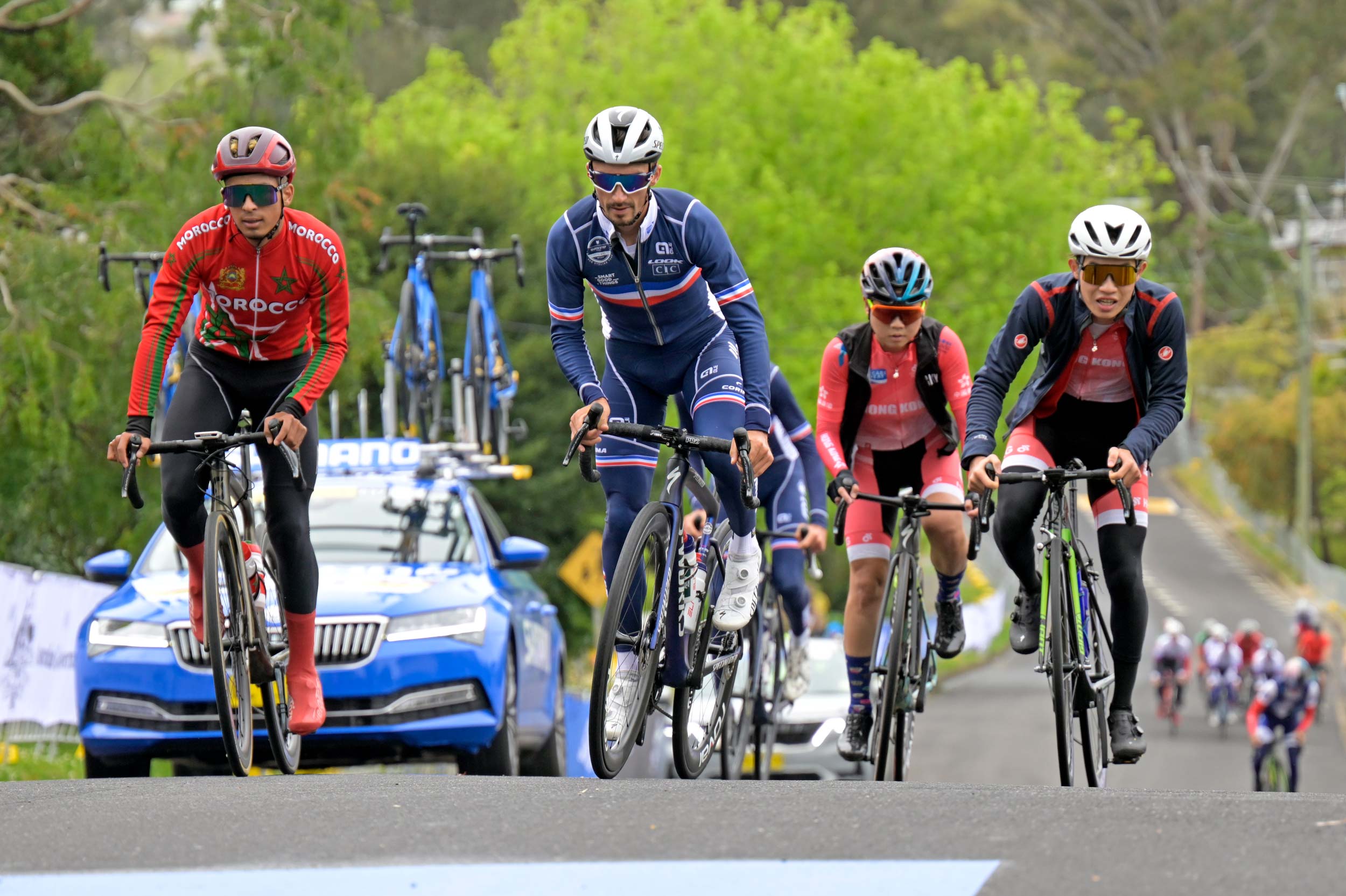
The defending champion of the elite men’s road race crown, Julian Alaphilippe, was joined by riders from Marocco and Hong Kong during the training day…
Failure to capitalise on investment
On the day that an overview of the race route was presented (10 December 2021), I spoke with the CEO of the organising committee Stu Taggart. He was pleased to be able to talk about where the worlds would be held and admitted that the course planning had been difficult. Still, he explained how he was satisfied with the end result even if it was, in his words, “a series of compromises to get the best outcome”.
The event began on a Sunday with the elite time trials and these races were followed by four days of competition largely held in suburbia. Of course, the start and finish of the ‘city circuit’ featured glimpses of Wollongong harbour and other pretty locations but Mount Pleasant and other surburban settings were where most of the action happened.
And it was the city circuit that was used exclusively for 10 of the 12 events of the championships, ie. the junior competitions (TTs and road races), the under-23 men’s TT and road race, and the Mixed TTT.
On the Thursday of the championships, the UCI held a function at the University of Wollongong – the annual conference of the sport’s governing body – while riders and spectators took advantage of what was dubbed ‘Training Day’.
It wasn’t until the final weekend that racing ventured any further than the city circuit, eventually allowing the organising committee the chance to showcase the glorious coastline and/or the climbs of the escarpment just a few kilometres to the west of Wollongong harbour.
The level of planning required to ensure that the two laps of the ‘Mount Keira Loop’ (ie. one for the elite women on Saturday, and one for the elite men on Sunday) was immense.
It didn’t help that torrential rain at the start of the year created havoc with landslides and the desperate need to repair the roads to ensure the major climb of the championships could indeed be part of the itinerary.
Still, Wollongong residents had reason to be frustrated by the huge imposition of road closures before and during the championships.
Okay, one legacy was a layer of fresh bitumen on roads in some parts of town, but there was also the long-winded, cumbersome, and expensive need to raise established median strips and other pieces of road furniture.
The UCI demands good, safe conditions for the racing and Wollongong responded. But this meant months of interruptions in the lead-up to the worlds, the installation of temporary (and removable) lane dividers etc… and then what?
When the championships were over has Wollongong council reinstalled all the elements of road furniture that were removed to ensure the streets could safely become a race circuit? That’s likely, as there is little chance of a bike race returning to the streets of this town any time soon. The result for residents? More interruptions… and, surely, a considerable cost to get the roads back to what they were before the championships.
By the time reparations were made to the road network, the UCI was long gone… and so too was any sense of a legacy from these championships.
Sure, Wollongong can now proudly boast about being a UCI Bike City… but what exactly does that mean? And what is the benefit of the title beyond the UCI being able to add an additional charge to the total invoice to the host city?
“We’re really pleased with the balance we’ve found to showcase the city,” Taggart told me when talking about the routes mapped out after months of consultation.
It took over three years from when Wollongong was announced as host of the 2022 worlds before anyone outside the organising committee knew where the races would be staged. But Taggart says his aim was “to include the community, and to bring together all the icons that people from the region would hope to see”.
If Ramah Avenue was an “icon” of Wollongong before the championships, it was certainly a well-kept secret. Okay, it became a fantastic vantage point for fans to see the riders in action but this climb to the west of Fairy Meadow would not have been what any locals would have nominated as a site that helped showcase the beauty of the region.
It was the UCI that issued demands for how the course should be and the organising committee did their best to respond.
“We want to create an operationally flawless events,” said Taggart at the launch of the route. “We want to make sure the riders have every opportunity to perform at their best.”
Ultimately Taggart’s quest became a reality, but that would have happened no matter where the races were contested. It was the world championships, a festival of cycling, a highlight of a calendar packed with world-class events that show off regions all around the world… while also generating a legacy.
Curious priorities
What Wollongong eventually created was indeed worthy of global attention. The road races on the final weekend were wonderful to watch. The course was challenging and offered some great TV moments but so much else was lacking.
Television cameras received priority and little effort was made to allow photographers the chance to document the action. For example, Bernard Papon – who was in Australia covering the worlds with a small crew sent from France by L’Equipe – had to make do with a bus shuttle service from the media centre to various locations around the course.
The charismatic Frenchman who wears bib number-one and spends his days taking photos from as a pillion passenger at events like the Tour de France, wasn’t offered a spot on a motorbike for the worlds of 2022. He is one of the most experienced photographers in pro cycling and he would have been the ideal candidate for capturing (and sharing) pool images – ie. photos issued to all media outlets to allow them to illustrate the racing… and, of course, the region.
The exposure that Papon and L’Equipe could have conjured was compromised, and that’s just one example of a missed media opportunity.
Instead of having the photographer on the bike of a motorbike, there were myriad officials buzzing by on the pillion seat, getting the ride of their lives and enjoying a fantastic vantage point to witness the action. Why? What was their role?
Rewatch some of the coverage (if you can) and count the number of officials on motorbikes… some would have been the regulators required to ensure safe conditions and others are likely to have been the timekeepers. But, for all the details these people offered the riders, it would have been much better to have had Papon and his ilk on the back of a moto instead of someone with a blackboard and some chalk.
Remember the finale of the last race? While victory for Remco Evenepoel seemed likely even with a lap to go, it wasn’t until the very end that the minor places were decided.
If the timekeepers had done their job and offered any information to the riders, then Christophe Laporte, Michael Matthews, Wout van Aert and others in this select group of 27 riders would have known they were indeed sprinting for a medal.
But no, the blackboard didn’t offer that level of detail. “I didn’t know if I was sprinting for a medal or 30th place,” said Matthews after finishing third in the elite men’s road race.
That’s life. And although it added to the anticipation for spectators, this anecdote also demonstrates a point: so many aspects of the organisation for Wollongong 2022 were managed to the nth degree but other key elements of what makes cycling so special were largely ignored.
So much emphasis was put on meeting the whims of the UCI. And yet so little was done to ensure the successful promotion of the worlds while also setting Wollongong up so that there would be an ongoing, lasting legacy from the championships, and the considerable investment that was made.
The fee to procure the rights to host the championships was over AUD$20m. Considerable additional funding was given by the federal government, some to make up for additional costs – like repairing roads destroyed by extreme weather, etc.
The acquisition of sponsorship revenue was so poor (ie. a token contribution in the scheme of things) that there were banners on the roadside simply stating, “Australian Government”. This branding gesture alone is laughable.
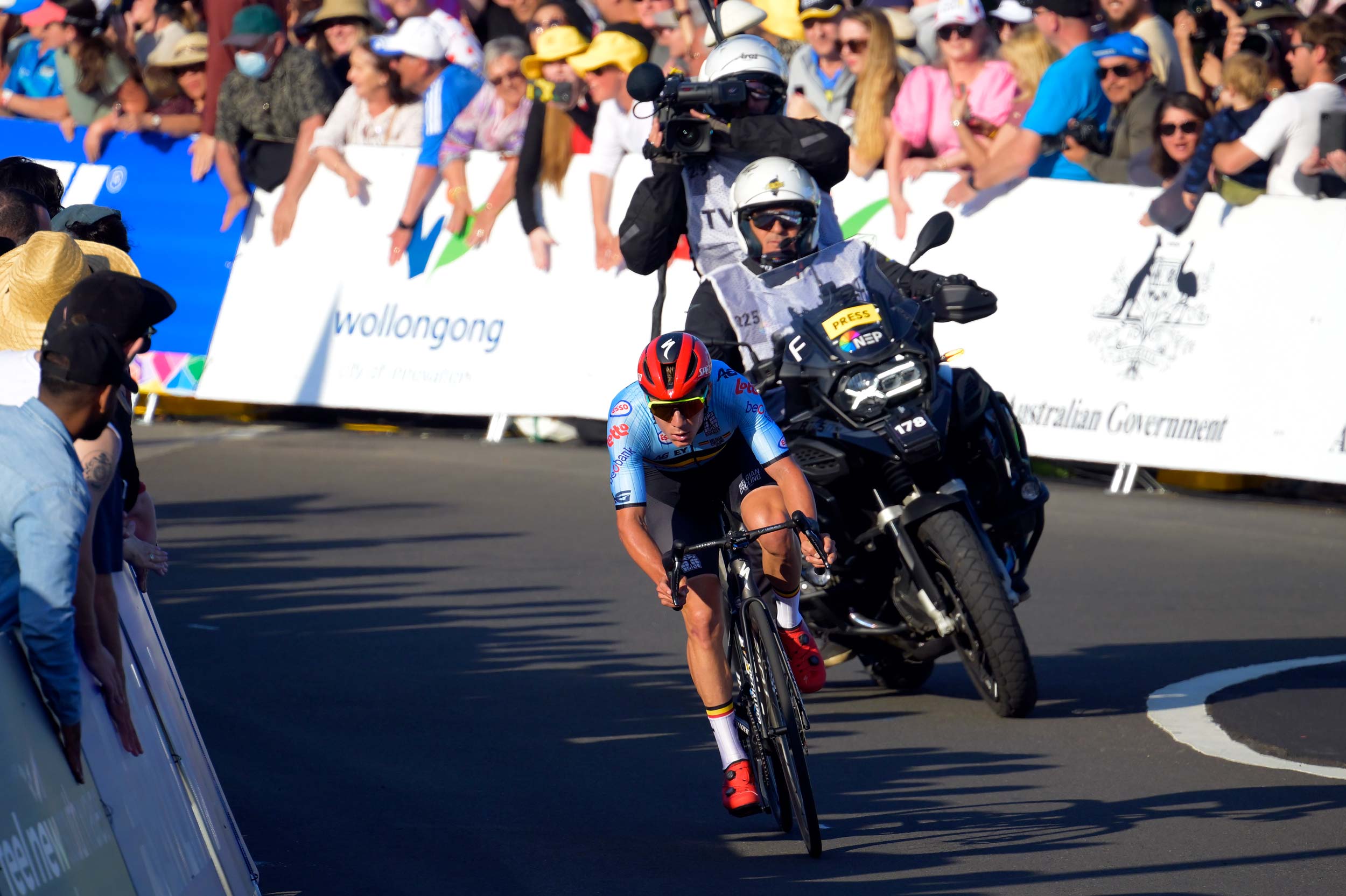
Remco Evenepoel with one lap to race before being crowned world champion. In the background: barricades promoting the Australian government and the national coat of arms… possibly the most obtuse sponsorship signage in sport.
Yes, tax revenue is often used to prop up events that have the potential to leave a legacy, to change behaviour, to highlight a region, and to offer inspiration for generations to come. But #Wollongong2022 is the only bike race I’ve been to where one of the barricade sponsors is the Australian government, and exposure is given to the coat of arms… and nothing else.
“The contribution from the Australian government is welcome,” concluded Taggart last December when the route was announced and the then-Minister for Sport, Senator Richard Colbeck pledged an additional five million dollars to the championships.
“It’s going to help us leverage the event nationally, beyond Wollongong – across Australia, which is fantastic, and internationally. And it’s also going to provide AusCycling with some great opportunities for legacy-based options.”
The sentiment of this statement seemed logical enough in the lead-up to the event, but with a few months to reflect on the legacy of the championships, it doesn’t ring true.
The championships came to Wollongong. It was fun for a (very little) while. And then it was over – and there’s very little to show for the investment. The UCI was the winner but Wollongong, and cycling in Australia, lost out in the long run.
– By Rob Arnold


